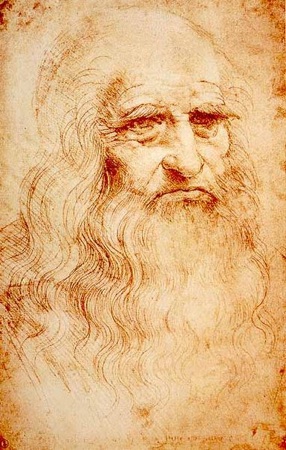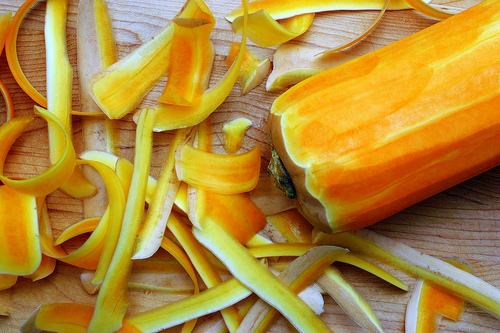After my recent classes on Leonardo da Vinci at the Italian Cultural Institute and the J. Paul Getty Museum in Los Angeles, Italian food and dining practices have been on my mind.
The significance of food in Italian daily life can be traced back to antiquity. Ancient Romans mused on agriculture after reading the works of writers Cato, Varro, and Pliny the Elder; well-to-do Romans admired frescoes and mosaics depicting their foods while dining in Pompeii and Herculaneum. It is no wonder that the first cookbook ever recorded would be credited to the Romans in the fourth century AD De re coquinaria (On Cooking) attributed to Marcus Gavius Apicius. Interestingly enough, Apicius didn't write the book. He was a wealthy man from the first century who had blown his fortune on food and wine. When he found himself penniless, he poisoned himself at his last banquet. His story was legendary and, nearly four centuries later, this compilation of 450 recipes was attributed to him.
Centuries passed before two new, significant cookbooks emerged: Maestro Martino's 1465 treatise of Renaissance cookery, Libro de arte coquinaria (The Art of Cooking), which marked the transition between Medieval and Renaissance cuisine; and Platina's 1474 De honesta voluptate et valetudine (On Right Pleasure and Good Health) , which disseminated Roman ideas about dining throughout Western Europe and included nutritional facts. A great number of vegetarian dishes appear in these books, an entirely novel concept.
It turns out that Leonardo da Vinci, the archetypal genius, was also charming, gregarious, an avid animal rights activist and vegetarian (something unheard of in Renaissance Italy - he was known to buy chickens just to free them from their cages!), and a "foodie." He owned a copy of Platina's book and kept a record of food-related notes discovered in 1981 (and debatably attributed to him). These kitchen notes include recipes, table etiquette ("don't look bored or uninterested when some one is talking to you") and household tips (who knew turnip juice removed bloodstains?). As "master of revels," Leonardo was in charge of orchestrating banquets under the Duke of Milan, Ludovico Sforza, and helped raise food and banqueting into the realm of the arts.

Let us pay homage to Leonardo da Vinci by preparing a roasted butternut squash dish inspired by Maestro Martino. Martino instructs to mix squash with sugar and vinegar "to suit one's masters taste or the taste of others," and Leonardo suggests that we cut squash into rounds over the summer, leave in the sun to dry and use as a wintertime tabletop decoration. I think that bit of advice would make Martha Stewart proud. Buon appetito!

Roasted Butternut Squash
1 (1 1/2 pound) butternut squash, peeled and diced into 1-inch cubes
olive oil
1 tablespoon honey
salt and pepper
1/2 cup apple cider
2 tablespoons cider vinegar
1 shallot, minced
2 teaspoons Dijon mustard
1 cup freshly grated Parmesan cheese
1.Preheat oven to 400 degrees F. Place the squash on a sheet pan. Add the honey, salt and pepper to taste and just enough olive oil to coat, toss and roast 15 to 20 minutes, or until tender.
2.While squash is roasting, combine the apple cider, vinegar and shallots in a small saucepan and bring to a boil over medium-high heat. Cook until reduced to about 1/4 cup. Off the heat, whisk in the mustard, 1/2 cup olive oil, and salt and pepper to taste.
3.When the squash is tender, place in a large bowl and mix with the grated Parmesan and the cider and shallot mixture. Toss well and serve.
Serves 6
(adapted from the Barefoot Contessa)
image:
Self portrait, 1512-1515, Leonardo da Vinci, Red chalk on paper, Royal Library of Turin